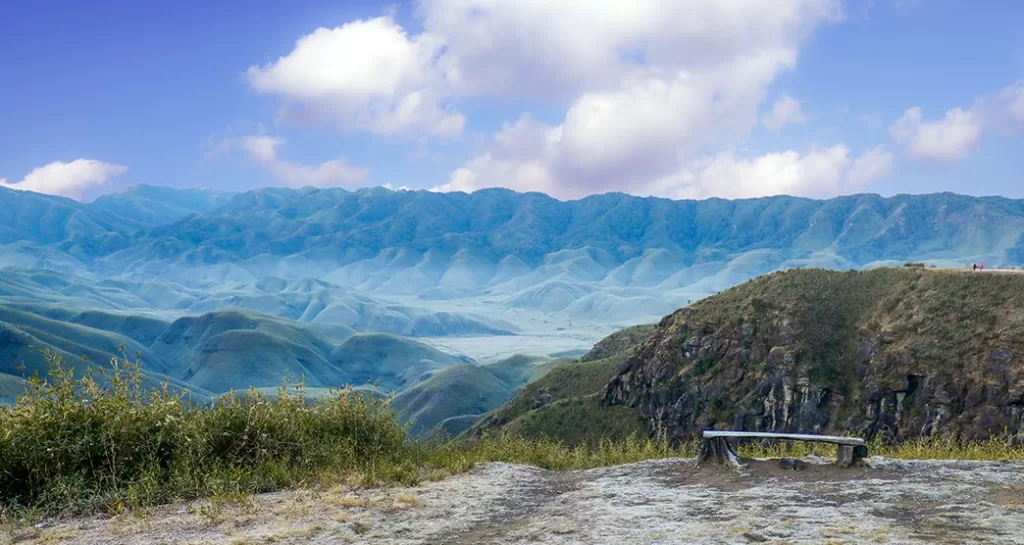Dzukou Valley: A Mesmerizing Natural Wonderland Nestled between Nagaland and Manipur, Dzukou Valley stands as a breathtaking testament to nature’s artistry. Situated at 8,045 feet, its rolling hills, sculpted knolls, and intricate contours create a landscape that feels almost otherworldly.
ALSO READ: Tsomgo Lake in Winter: A Frozen Paradise at 12,400 Feet
Dzukou Valley A Valley in Bloom
Dzukou Valley undergoes a stunning transformation in early July, when its meadows burst into a riot of wildflowers. Though the valley is home to a diverse array of flora throughout the year, the Dzukou Lily is its most famous resident, drawing nature lovers and photographers alike. Standing amidst this floral paradise is nothing short of magical—a sight that lingers in the heart long after one leaves.

Dzukou Valley: The Story Behind the Name
Local folklore offers two interpretations of the valley’s name. One legend speaks of Viswema villagers who tried to cultivate crops here but failed due to harsh conditions, giving rise to the name “Dzukou,” meaning ‘soulless and dull.’ Others suggest the name originates from both the Angami and Mao languages, where it means “cold water,” referring to the icy streams that crisscross the valley.
An Adventurer’s Dream
Dzukou Valley isn’t just a visual marvel—it’s also a trekker’s paradise. Unlike the towering Himalayan routes, this trek leads adventurers through dense forests, rugged trails, and steep ascents. While often classified as “easy,” the trek demands endurance, especially when navigating slippery paths and sharp inclines. But the reward? A sweeping panorama of undulating greenery that makes every step worthwhile.

The nine-kilometre trek takes five to six hours to complete, with multiple routes to choose from:
- Nagaland Side: The Viswema Route (longer but easier, with a motorable stretch) or the Jakhama Route (shorter but steeper).
- Manipur Side: A newer six-hour trek begins from Mount Tempu in Senapati district.
Regardless of the route, it’s advisable to have a local guide for navigation and safety.
Experience the Magic
Whether you seek adventure, serenity, or a brush with nature’s finest creations, Dzukou Valley promises an unforgettable experience. Let its vast meadows, vibrant blooms, and tranquil streams weave their magic, leaving you breathless in wonder.
Preserving the Pristine Beauty of Dzukou Valley
Recognizing the fragility of the ecosystem, local village authorities have taken steps to protect Dzukou Valley’s pristine, plastic-free environment. Visitors are required to pay a refundable security deposit for any plastic items they bring. Simply carry them back with you, and you’ll receive your deposit upon leaving—a small but significant step towards conservation.

Exploring Kohima: A Blend of History and Culture
While Dzukou Valley offers a stunning natural retreat, the nearby city of Kohima boasts a wealth of cultural and historical attractions. History buffs can explore the Nagaland State Museum or take a trip to Naga Heritage Village for an immersive experience of local traditions. A visit to the Kohima War Cemetery provides a moment of quiet reflection, honoring fallen soldiers in a serene setting. For those drawn to spiritual landmarks, the Cathedral Church, perched atop a hill, offers breathtaking views and a peaceful atmosphere.
Whether you’re seeking nature, history, or spirituality, a visit to both Dzukou Valley and Kohima ensures a well-rounded experience in Nagaland’s heartland.


